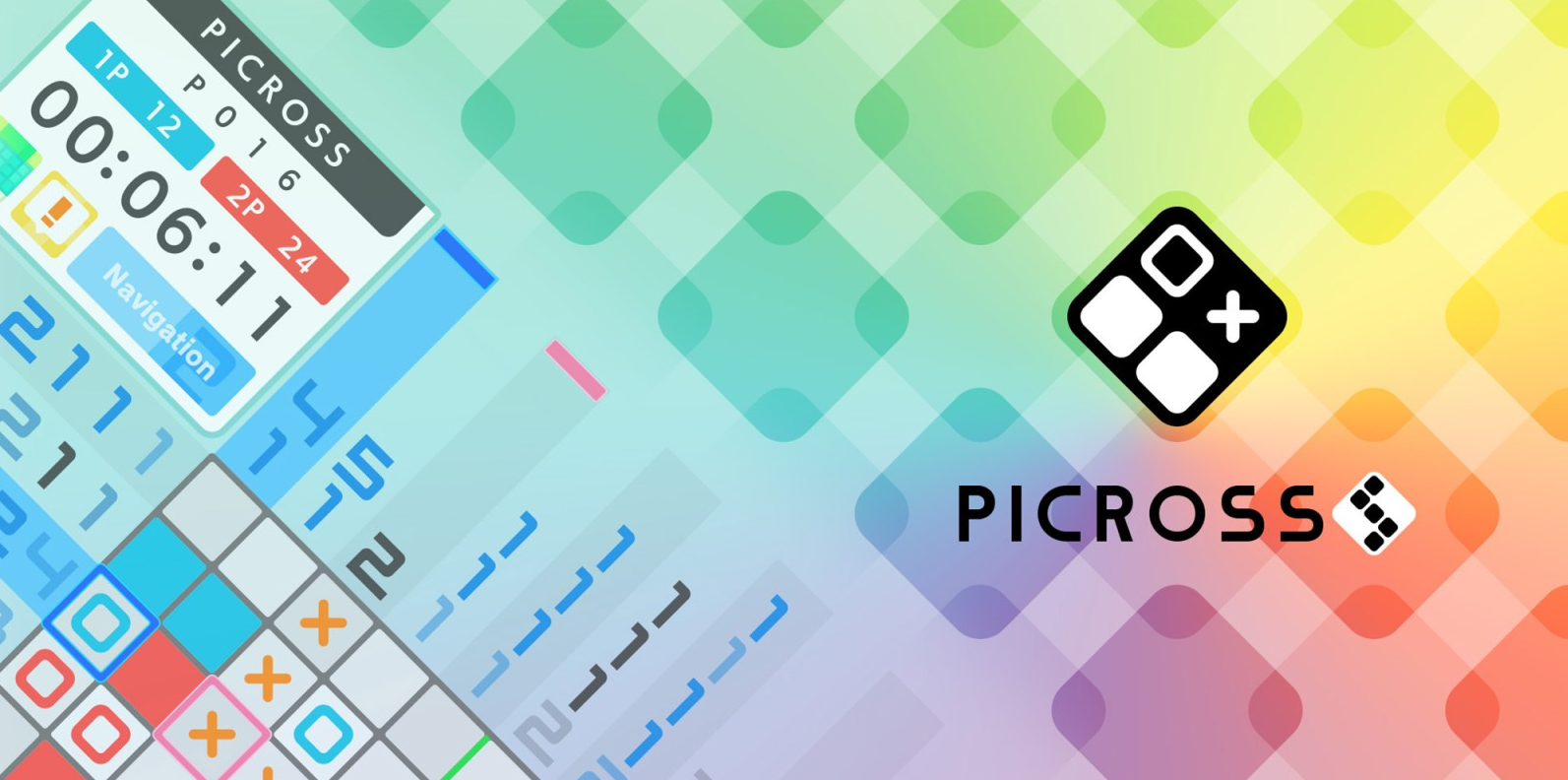How Playing Picross Has Forced Me To Re-Examine My Manuscript
The addictive nonogram puzzler is a bountiful insight for writing a novel

Somewhere around the start of the pandemic, in the sludge of March 2020, I lost my desire to write. Saddled with an uncertain future and (again) thrown a loop in my millennial perception of that future, my plans for myself dwindled. My motivations sank — though, with all honesty, those motivations were fully obliterated for months. Essays, short stories, my own novel, all of these things were waylaid by a listless and grotesque numbness, a bland disquiet that had me doing very little beyond playing video games and accomplishing the minimal chores required to keep me living from sleep to sleep.
At some point, I persevered. I continued working on my novel. I wrote essays for SUPERJUMP. I found a reason to continue writing, but that reason had little to do with the future, or progress, or any of the motivations I had once held so dear. This reason had more to do with my own stagnation than anything else, the drive to write crafted by a full anxiety and panic that to not write might fully put me in the grave. Slowly I crawled out of the pit, finished my manuscript, started another one, and continue to churn out essays and tighten short stories.
I never felt any better.
Solving the Puzzle
The pandemic has crushed me both physically and mentally, and I’ve written about this before. It’s strange to pretend to be okay in a time when no one is okay, and there certainly is a toll in that pretending. It reminds me of the emotional labor of forcing smiles at work, a labor that has both personal and ethical tolls. My artistic motivations are emotional labor, and this weight is only ever assuaged while I’m playing video games. Outside of the obvious inspirations, few video games have ever helped me with the technical or motivational aspects of writing, especially when it comes to writing long-form stories such as novels.
Recently, at the suggestion of friends, I began playing Picross. I’ve always enjoyed puzzle games, from Tetris to Lumines, because of the level of dissociative focus they allow me. Solving problems in a virtual space — especially when the problems take up a substantial portion of my conscious mind — can be a meditative boon, these games briefly allowing me a respite from the ho-hum day.
Picross is a relatively interesting series of games that may be surprisingly familiar to you, even if you’ve never played them. Nonograms are also referred to as “Paint By Numbers,” picture-logic puzzles where cells in a grid must be filled in according to clues that run the X and Y axes and inform you of where a piece might go, à la Minesweeper. The purpose of Picross is to end the puzzle with the reward of a picture, the stark contrast between monochrome mathematical scrutiny and colorful imagery a fun surprise that almost always takes me off guard when the final piece successfully placed. I have been playing Picross S Genesis & Master System on the Nintendo Switch, a cute entry that rewards each successfully completed puzzle with a small image of a Sega mascot, character, or item.
It’s cute, fun, and rewarding.
What I didn’t count on was Picross forcing me to consider the abstracts, construction, and total picture of my working novel.
Can’t See the Forest
Above all things, I consider myself a novelist. I’ve written everything from short stories to SEO content, but in my heart of hearts I deeply love telling long-form stories. I wrote and self-published my first series of science fiction novels in my mid-twenties, and since then have been working on a variety of manuscripts that have further honed my craft. I have worked on two separate lengthy manuscripts during the pandemic, the most recent of which is the fourth draft of an iteration that has been my steady work since 2013. The novel has been many things over the last eight years — the characters, plot, details, and story itself changing again and again as I have grasped the shape of it. Similarly to how you slowly start to see the real image as the Picross puzzle comes into focus, I have realized this novel by moving segments, removing others, and figuring out how to solve it.
One of the most common frustrations plaguing any artist is the distance between skill and vision. When someone begins any work — whether it’s written, drawn, crafted, whatever — they will notice that the distance between their imagination and what they can actually accomplish is massive, and frustrating. The only way to get better at any craft is to do it over and over again, a tedium that stops many from becoming “good” at their chosen medium. When it comes to writing, there are no short cuts — you have to read, and you have to write. That’s it. If you want to make the words on the page pop, if you want your prose to shine, if you want to grasp the unreal with the real, you have to work at it over and over and over and over and over again.
When it comes to solving the puzzle of our writing, I find this quote by Neil Gaiman to be fairly sobering:
“You write. That’s the hard bit that nobody sees. You write on the good days and you write on the lousy days. Like a shark, you have to keep moving forward or you die. Writing may or may not be your salvation; it might or might not be your destiny. But that does not matter. What matters right now are the words, one after another. Find the next word. Write it down. Repeat. Repeat. Repeat.”
Picross both reinforces and inverts this idea. When it comes to video games, whether it’s Dark Souls or Tetris, the more you play something the better at it you become. Picross starts small, the puzzles existing on a 5x5 grid, then 10x10, then 15x10, and so on, until what once seemed impossible is just another puzzle, just another image for you to uncover. This is the shape of the novel. At the start of any manuscript, I am only working on the world building and the outline. The first draft is nothing but a skeleton, bearing little resemblance to what the finished novel will be. Subsequent drafts add musculature, organs, flesh, features. It’s not until you work on it — slowly, and with patient intent — that the true image will reveal itself to you, and that image can be surprisingly different from its monochrome beginnings. Like the final piece falling into place and revealing the completed Picross puzzle, I am often astounded by what my own manuscripts decide to reveal to me over time.

The Hidden Picture
I’ve long held the opinion that any individual artist is desperately trying to convey one single idea to their audience (or themselves) over the course of their careers. If you look at the works of David Lynch, it’s easy to spy the repeated imagery, characters, ideas, and concepts that exist in each of his films. One could say that what was conveyed in Eraserhead has simply come to pass in all of his works, his ability to finely tune his authorial ideas growing across the bulk of his career. Nothing is truer in this style than of Hideo Kojima, where Death Stranding feels like the magnum opus of what he has so diligently crafted across Metal Gear Solid, Zone of the Enders, and even Boktai. His ideas of pacifism, humanity and history coalesce in one truly marvellous package, but to call Death Stranding the end of his ideas would cut him short — Kojima, like all authors, is simple getting closer and closer to that final picture, every completed project shortening the distance between his intent and his skill.
The themes that come up again and again in my own works are common ones — death, humanism, labor, futurism. Again and again, as I work on my manuscripts, I scrub away a bit of that white unknown, shade in the pieces that feel right to me, and end up with a new final image. With every story I “solve” I become better as a writer, which allows my stories, prose, and style to become more complex, the imageries they evoke gaining new clarity. The only way this can happen is if I accept the difficulty of each new puzzle and push through with my personal motivations and desires, clearing each line, coming to terms with what image might lay at the end of the unknown, even if it doesn’t look like my fuzzy imagination.
As with any newly-started puzzle in Picross, my motivations for a particular novel might remain unknown to me until I have written the last chapter. I don’t always understand my personal motivations, but a part of me does not want to understand them. Despite my anchored depression and personal lifelong struggles, I continue to write because I desperately want to see the full picture. I want to know what lies at the end of my personal puzzle, even if much of the path is nothing but numbers and squares for years and years. When I sit down, fingers splayed across the keyboard, the truth of my own imagination often remains hidden from me, my subconscious working in tandem with my personal creativity to uncover that final image. Whether it takes a year or ten to get to where I am going, I want to solve that final puzzle because I deserve to see — with colorful clarity — that image complete.
“You never learn how to write a novel. You just learn how to write the novel that you’re writing.”
Gene Wolfe
You may know the rules, and you may come to expect the terms of your own motivations and writing style, but as with every new puzzle in Picross, you only ever learn how to solve for the thing you are currently working on. Take it one number, one line, one day, one puzzle at a time. Keep going.
